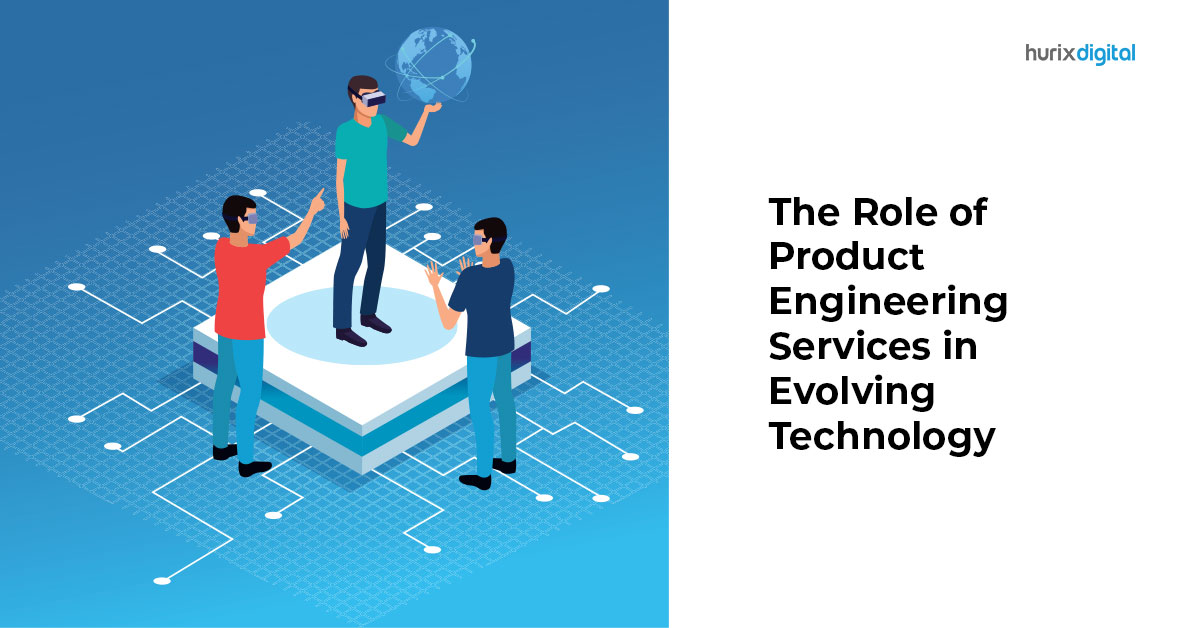The Role of Product Engineering Services in Evolving Technology
The ever-increasing digital transformation across various industry sectors combined with growing demand for newer types of technological devices has opened up a vast market for product engineering services. Every organization needs a comprehensive framework.
This framework aims to maximize the value the company derives from the entire product lifecycle (PLC) of its products. This is especially true in the era of technology advancements and emerging technologies.
Given the significance of product engineering, it is not surprising that the global product engineering services market size is predicted to reach $1610.6 billion by 2031 from $1085.8 billion in 2021.
Recent innovations in artificial intelligence (AI) and the need for technology integration across different segments of the production process call for fail-proof product engineering services.
Table of Contents:
- What is Product Engineering?
- What is the Role of Innovation in Product Engineering?
- Different Phases of Product Engineering
- Approaches to Product Engineering
- Conclusion
What is Product Engineering?
Product engineering refers to the entire process of creating a device, object, or system for commercial purposes. The process encompasses ideation, development of the idea, designing the product, creating a prototype, testing, and deploying the product.
Product engineering is a vast field that applies to physical goods and digital software products. The manufacturing process is heavily dependent on product development.
The scope of product engineering covers many aspects of the item, including its quality, cost, performance, usability, reliability, serviceability, and lifespan. Therefore, it also comes with multiple challenges that can be met only by a brilliant product engineering services team.
Also Read: 5 Industries That Will Drive Virtual Reality in Corporate Training
What is the Role of Innovation in Product Engineering?
Rapid technological advancements are rendering products obsolete within a shorter period than before. Technology developments heavily impact product engineering services. Therefore, it is imperative to have a fail-proof approach to the process that can withstand the test of time.
Companies launch thousands of new products each year without knowing which ones will do well and which will fail. According to Harvard Business School professor Clayton Christensen, 95% of the nearly 30,000 new products launched each year end up failing.
Many products fail to perform because they do not appeal to the target audience. Products may also fail if they are poorly built, unsafe to use, too expensive, or not according to the target audience’s tastes. Even large and successful companies occasionally launch poorly-researched products in the market and suffer huge losses.
One way of developing products with a user-centered design that customers would love to buy is to invest in innovative product engineering services. Excellent product engineering keeps the focus on the customer’s requirements while also keeping the organization’s core values in mind.
Due diligence is accorded to adding innovative features, security, scalability, testing, and deployment.
Different Phases of Product Engineering
Product engineering has the following phases.
1. Concept
The first step in product engineering is to conceive an idea. The idea is then documented and scrutinized to determine whether it is good enough to pursue.
2. Design
Once an idea has been finalized, the next step is to make improvements and changes to it. Engineering designs based on the idea are created and finalized.
3. Development
Now comes the development phase. The proposed design is now implemented and assembled to create an actual product. The focus here is also on managing and optimizing costs.
4. Testing
Once developed, the product is then made to go through stringent quality checks and testing to ensure that the prototype is fault-free and safe to use for the intended purpose.
The faults, if any, need to be identified at this phase so that the required changes and modifications can be made before the product is launched.
5. Launch
Once the product has been tested for safety and efficiency, it is produced for commercial consumption and launched in the market.
Following its launch, the company collects feedback from users to further improve the product in future versions. External product testers may also be hired to understand the user experience.
6. Re-Engineering
After the launch of the product, it is important to update it and provide maintenance as needed periodically. Companies should also set up a customer grievance cell to address customer complaints and rectify their issues in time.
Approaches To Product Engineering
Product engineering services are not just about the creation of new products. It has many aspects, and there are multiple approaches to it.
1. Identifying The Gaps
Product engineering includes identifying the gaps in the market that can be filled with new products and services.
By identifying the products and services that don’t exist in the market as yet, the company can get ideas for what to produce next.
2. Prioritizing Must-Have Features
The new products need to be launched with exciting features that the customers look forward to. Often software companies launch their programs as minimally viable products (MVPs) and ask users to download updates later on.
Companies that deal in tangible products don’t have this privilege and have to constantly innovate to add new features to the updated versions of their products.
3. Ensuring a Product-Market Fit
Whenever a company gets a good idea that can be made into a product, it is important to determine whether an audience for such a product exists or not.
Figuring out whether there is sufficient demand to make this a profitable addition to the company’s product list is imperative.
4. Ensuring Security Measures for Software
Software programs and products that are to be connected to the internet are susceptible to security attacks. In 2022 alone, the global average data breach cost amounted to $4.35 million.
That is why security measures are so important. Product engineering teams collaborate with IT professionals to ensure that the products they build are protected from malicious attacks.
Also Read: Importance of Data Security in Higher Ed Institutions for Data Protection
Conclusion
In the contemporary business world, there is a need for technologically advanced product engineering services to produce products, software, and systems that are relevant and profitable in the modern marketplace. There is a great emphasis on building user-centric designs that cater to the ever-changing demands of a company’s target audience.
There is no place for poorly-planned products in an era where technological upgrades occur every few months if not years. That is why it has become more important than ever to invest in high-quality product engineering services.
If you want to outsource your company’s product engineering requirements, Hurix Digital is your best bet. An innovator in the IT field, Hurix has been developing cutting-edge technological solutions for corporates and educational institutions for over 20 years. Simply contact our experts and let us develop a plan that meets your organization’s needs.

SVP & Head – Hurix Technology Solutions
Global Delivery head with 25 years of working experience in NYC investment banks and fintech companies. Hands-on technology delivery management and program management, accountable for stakeholder relationships, Strategic roadmap, P&L, Revenue growth, Account Management, and employee satisfaction.









